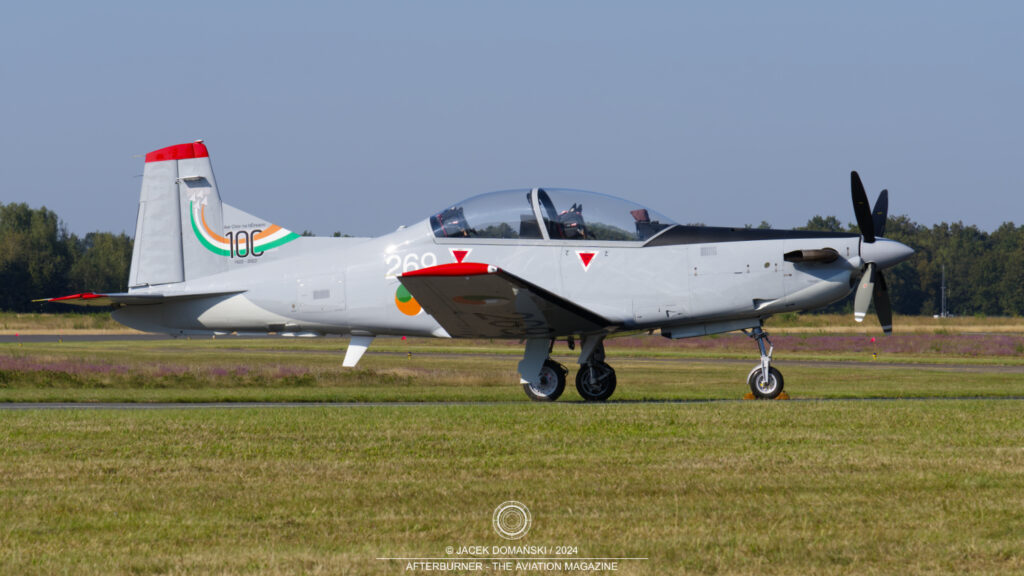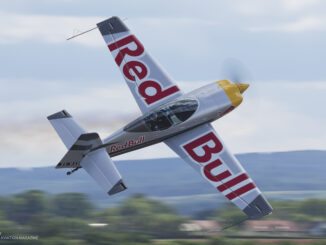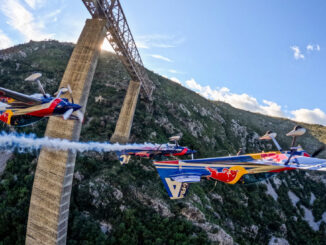 At the beginning of October 2024, the Irish Air Corps (IAC) celebrated the milestone of twenty years of operations with Pilatus PC-9M. The official commemoration event was held on Friday, 4th of October, bringing together the country´s present and past PC-9 personnel, as well as special guests from the French Air and Space Force, the Royal Air Force, the Slovenian Air Force and the Pilatus company.
At the beginning of October 2024, the Irish Air Corps (IAC) celebrated the milestone of twenty years of operations with Pilatus PC-9M. The official commemoration event was held on Friday, 4th of October, bringing together the country´s present and past PC-9 personnel, as well as special guests from the French Air and Space Force, the Royal Air Force, the Slovenian Air Force and the Pilatus company.
Eight examples of the Pilatus PC-9M single-engine, tandem seat turboprop training aircraft were acquired by the Irish Air Corps in 2004, as the successors of SIAI-Marchetti SF-260W Warrior fleet.
The aeroplane not only became the main pilot training aircraft for the IAC but, in addition, was also the only Irish aeroplane with combat capabilities. The Irish PC-9Ms are equipped with six underwing hardpoints and their standard close air support (CAS) configuration includes two FN HMP250 gun pods and two FN LAU-7 rockets pods, each containing seven unguided 70mm Folding-Fin Aerial Rockets (also known as ´Mighty Mouse´).
The Irish PC-9Ms are equipped with glass cockpit featuring fully tandem-capable avionics package, head-up displays, onboard Weapons Management System and Martin-Baker CG-A ejection seats.
During the twenty years of operation, the IAC lost one of its PC-9M aircraft. Regrettably, the crash that occurred on 12th October 2009 resulted in the death of the crew – Air Corps instructor Captain Derek Furniss and Cadet David Jevens. A new aircraft was acquired in 2017 to complement the country´s PC-9M fleet.
The Irish PC-9Ms are being operated by the IAC Flying Training School (FTS), located at Casement Aerodrome, in Baldonnel. The FTS is also equipped with fully capable PC-9 Fixed Training Device flight simulator, used in a role of primary trainer.

It is also worth to mention that this year the Irish Air Corps celebrates its centenary. The country´s air force was officially established in 1924, as a result of restructuration of the Irish armed forces at the end of the Civil War. Although, the beginning of the Irish military aviation dates back to 1922 and creation of the National Army Air Service.
Nowadays, the IAC structure includes its Headquarters, four air wings (No. 1 and No. 3 Operations Wing plus No. 4 and No. 5 Support Wing), Communications and Information Services Squadron, as well as the Air Corps College (FTS, Technical Training School and Military Training and Survival School).
Primary roles of the IAC are to support the Irish Army in full scale of aerial operations, such as observation, reconnaissance, CAS, casualty evacuation and maritime surveillance. The secondary roles included support to the government, civil community, air ambulance, snow and island relief.
The IAC fleet currently includes ten helicopters (six AgustaWestland AW139 and four Eurocopter/Airbus EC135), two CASA CN235 Maritime Patrol Aircraft, one Learjet 45 (used for Ministerial Air Transport services), one Britten-Norman Defender, four Pilatus PC-12 aeroplanes and the aforementioned eight PC-9M aircraft.
Between 1986 and 1998, the IAC was represented by its official display group, the Silver Swallows Aerobatic Team. It used to fly four Fouga CM.170 Magister aircraft and the team´s name was derived from the colour of the aeroplanes and the characteristic, V-shaped tail of the Magister.
In 2022, the IAC demonstration team was re-activated and now flies with four Pilatus PC-9M aircraft. Members of the group are active IAC pilots and performing flying displays as the Silver Swallows team is their secondary duty.




